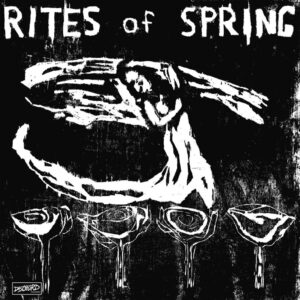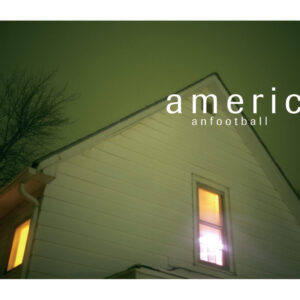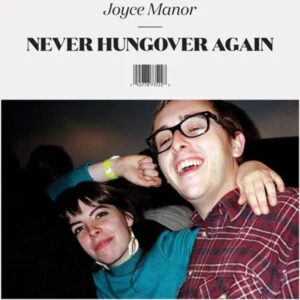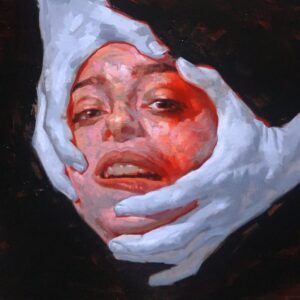
In the 1964 Supreme Court case Jacobellis v. Ohio, a First Amendment tangle over the line between art and obscenity, Justice Potter Stewart offered a famously subjective metric for identifying pornography that has echoed through the ages: “I know it when I see it.”
The same could be said of the subgenre known (sometimes pejoratively) as emo. Originally shorthand for “emotional hardcore” in the frenetic D.C. punk scene of the 1980s, the term has since come to describe a broad swath of sincere sounds with seemingly little in common — from the arena-ready catharsis of millennial mall-rockers Paramore to the bummer beats of late Long Island mumble rapper Lil Peep.
“I rarely actually use the word when I’m talking to folks who aren’t immersed in the scene, or aren’t hyper-online or punk or whatever,” says singer-songwriter Ben Sooy of Denver band A Place for Owls, whose gentle-rocking take on the style is marked by shimmering guitars and reflective lyrics on love, loss and belonging. “But we do claim emo as a badge of honor. It essentially means elevated emotions. You’re going to feel big feelings when you listen to our band.”
Big feelings will abound when Southwest Emo Fest makes its Front Range debut at Larimer Lounge on June 29. The all-day showcase got its start last year in New Mexico when two emo-adjacent tours collided in Albuquerque, featuring a handful of bands who will return for this year’s Colorado iteration: Troubled Minds, Savings and Right on Kid. They’ll be joined on the upcoming Denver bill by local headliners A Place for Owls and fellow homegrown acts Oh Drifter, Summer Stars, The Losers Club and more.
“There aren’t a whole lot of fests dedicated to this kind of sound in our part of the country,” says Matt Aldawood of Phoenix pop-punk emo outfit Troubled Minds, who helped orchestrate the inaugural festival. “I felt like we should be doing something to bring people together. This is us, as bands, seeing a need and taking initiative to try and make our scene better.”
Wanna hurt your own feelings? Check out a Boulder Weekly-exclusive emo mixtape curated by Ben Sooy of A Place for Owls, featuring modern classics and choice cuts from Southwest Emo Fest 2024.
That scene has faced its share of slings and arrows over the years. After decades at sea in the choppy waters of critical consensus — online tastemaker Pitchfork famously gave Jimmy Eat World’s 1999 masterpiece Clarity a score of 3.5 before revising it more than 20 years later to 8.6 — the organizers behind Southwest Emo Fest hope the tide has turned for good.
“When the genre kind of died down, people moved on to different things,” says this year’s co-organizer Matthew Hanson, frontman of the Denver-based band Oh Drifter. “They had these pictures from high school with goofy haircuts, but then people got older and it became a meme: Felt emo, might delete later. The nostalgia came back, and people realized they liked that stuff in high school — and they still like it.”
‘What wave of emo are you?‘
Understanding the many lives of an elusive term
First wave (1984-1991)
Essential bands: Rites of Spring, Embrace, Moss Icon
Sounds like: hemorrhaging apologetically in the pit
Fed up with the chest-thumping machismo of hardcore spaces in the early 1980s, a subset of artists began to turn the scene on its head. One of those musicians was Guy Picciotto, a creatively restless 19-year-old from the DIY hotbed of Washington, D.C. whose band Rites of Spring would set a template for a new style of extreme punk that emphasized vulnerability over violence.
Picciotto would again redraw the map with his more politically charged outfit Fugazi, spearheading a principled new era of independent rock that wore its anti-sellout ethics on its sleeve. But despite only being active from 1983 to 1986, Rites of Spring left an equally influential blueprint for a tumultuous style of guitar music that carved much-needed space for feelings amid the clamor and clangor of the mosh pit.
As the punk-rock iconoclast told a local zine at the time: “To hurt yourself playing guitar while falling around on stage is more noble than sitting weeping to yourself somewhere.”
Second wave (1992-2000)
Essential bands: Sunny Day Real Estate, Braid, American Football
Sounds like: the unnameable sadness of summer’s end
As the grime of grunge lost its flannel-clad luster in the mid-90s, a new sound began to color the edges of DIY music scenes at house shows and punk clubs across the country. Growing out of the tradition sparked by Picciotto and co. in the previous decade, emo’s second wave was beginning to crest.
Trading walls of distortion for twinkling guitars, wistful lyrics and off-kilter time signatures, this new mutation largely eschewed its hardcore roots in favor of something more polished and polite. Often dubbed “midwest emo” due to the heartland origins of bands like American Football, Braid and The Get Up Kids, the second-wave era is arguably the slippery subgenre’s most defining.
In his seminal 2003 book Nothing Feels Good: Punk Rock, Teenagers and Emo, music journalist Andy Greenwald sums it up like so: “This was the period when emo earned many, if not all, of the stereotypes that have lasted to this day: boy-driven, glasses-wearing, overly sensitive, overly brainy, chiming-guitar college music.”
Third wave (2001-2009)
Essential bands: My Chemical Romance, Paramore, Jimmy Eat World
Sounds like: being too nervous to talk to the Hot Topic cashier with a septum piercing
While the Arizona-based quartet Jimmy Eat World got off the ground during emo’s fabled second wave, the band’s 2001 mega-hit “The Middle” would mark the subgenre’s unlikely divebomb into the mainstream. With its bouncy palm-muted guitars, crashing cymbals and life-affirming chorus — “It just takes some time,” a generation still buzzing from the sugar rush of ’90s pop-punk collectively wailed into their hairbrushes — the track sailed to No. 5 on the Billboard Hot 100 chart.
Jimmy Eat World’s gate-crashing rise during the death rattle of the MTV era opened the door for a sonically diverse constellation of artists with disparate sounds and arena-sized ambitions. Bands like My Chemical Romance, Taking Back Sunday and Paramore would soon follow suit, launching an ill-defined genre from the obscurity of sweaty midwestern basement shows to the profit ledgers of major labels and stadium marquees around the world.
Jimmy Eat Colorado: Boulder Weekly sat down with the emo alt-radio hitmakers on their 30th anniversary to talk about the band’s favorite haunts in the Centennial State.
Fourth wave (2010-2018)
Essential bands: Modern Baseball, Joyce Manor, Foxing
Sounds like: second-wave emo
Its stylistic boundaries more fluid than ever, the commercial success of third-wave emo came with a head-splitting cultural hangover. Associated with the angular haircuts and “rawr xD” aesthetics of the early social media platform MySpace, the term fell more out of fashion than ever amid the rapid rise of indie-sleaze hipsterism.
The genre’s tanking reputation had gone deeper than losing a few cool points, blossoming into a full-blown moral panic. In response to an imagined plague of suicidal teens in eyeliner typing tearful odes to self-harm on the internet, a 2008 article in the Daily Mail ran with the headline: “Why no child is safe from the sinister cult of emo.”
From this low point grew a new crop of artists who skipped the baggage of the previous decade by harkening back to the genre’s more innocent second wave. From the sensitive pop-punk stylings of Joyce Manor and Modern Baseball to the melancholic yearning of Foxing and The Hotelier, this new movement — dubbed the “emo revival” by culture writers — would mark a critical turning point for the scene that continues today.
Fifth wave (2018-present)
Essential bands: Pool Kids, Sweet Pill, Home Is Where
Sounds like: second-wave emo with fewer dudes
For a bridge between emo’s past and future, look to the festival circuit. The anticipated Best Friends Forever Fest happening this October in Las Vegas brings the old guard together with the new, featuring giants like Sunny Day Real Estate and American Football alongside an emerging slate of younger and more diverse acts like Sweet Pill, Mannequin Pussy and Pool Kids.
Of the modern classics emerging in emo’s ongoing fifth wave, none connect the dots between its varied eras with as much verve as Sweet Pill’s raucous 2022 debut Where the Heart Is. At turns blistering and beautiful, these 10 tracks skip gleefully across the subgenre’s hardcore origins, math-rock mutations and radio-ready hooks. Drawing from these different corners of a storied past, the Philly quintet represents the future of a style the world can never quite seem to put its finger on.
“I definitely grew up listening to the more commercial side, like Taking Back Sunday, Armor for Sleep and Paramore,” the band’s 29-year-old frontwoman Zayna Youssef said in an interview last year. “I feel like that’d be a fun Buzzfeed quiz: ‘What Wave of Emo Are You?’”





